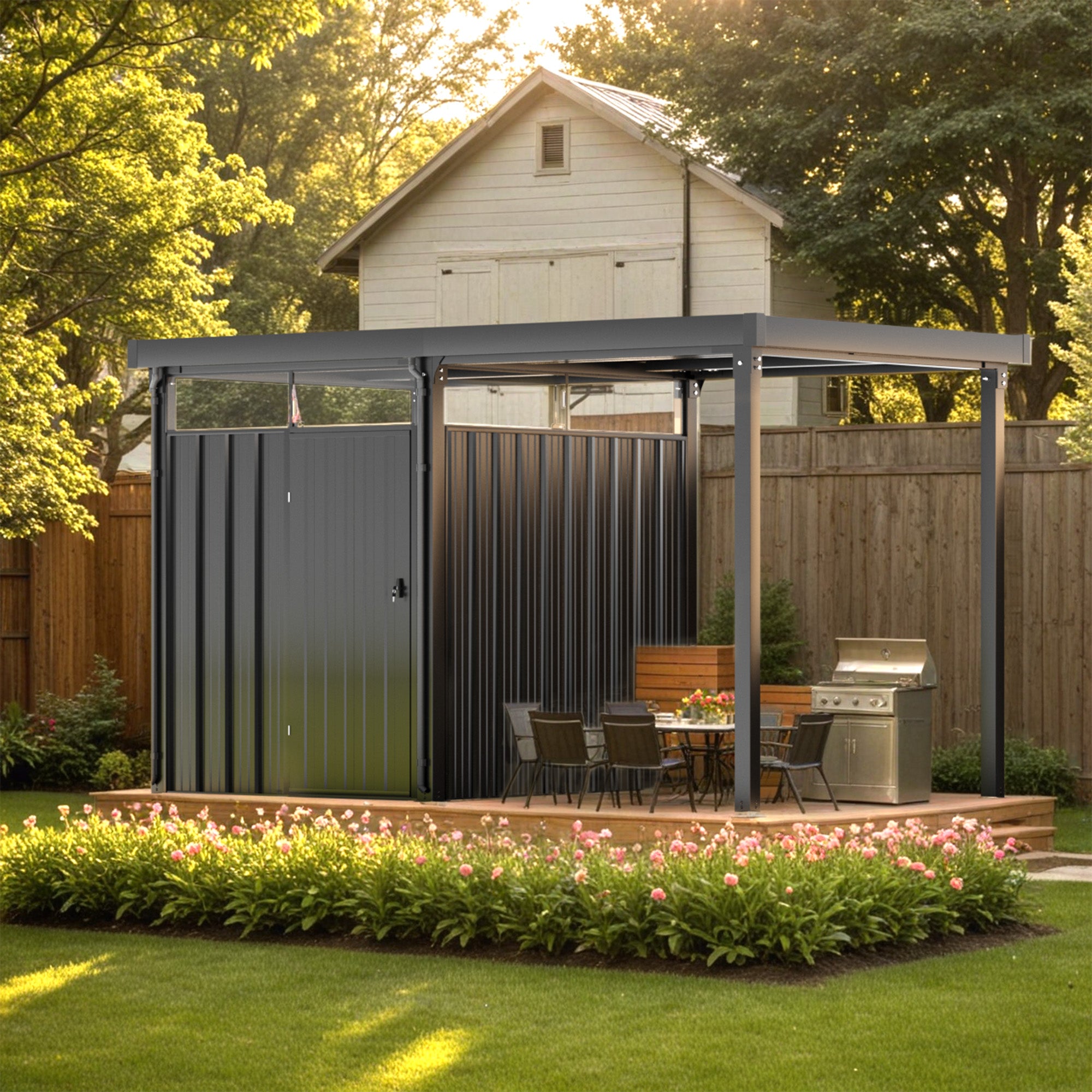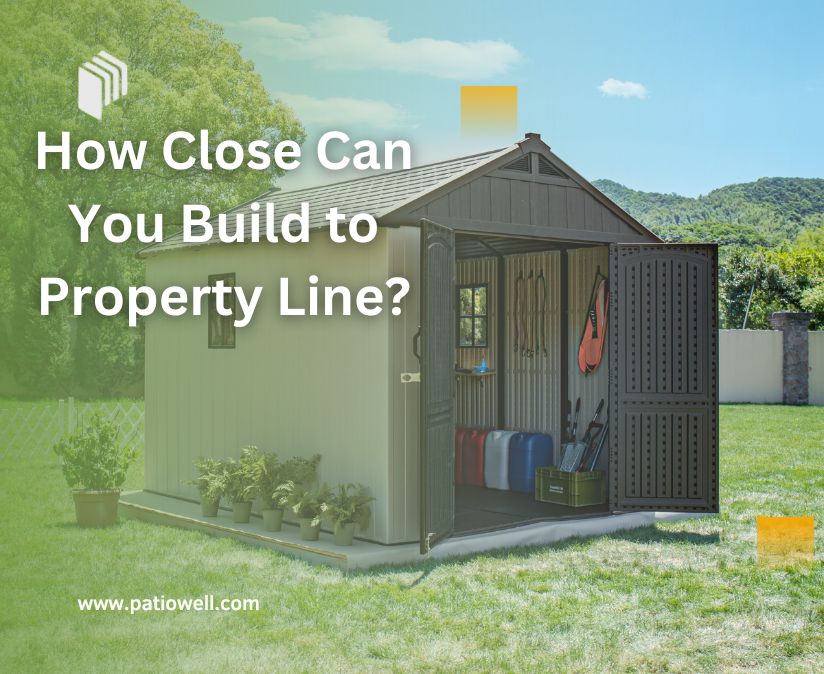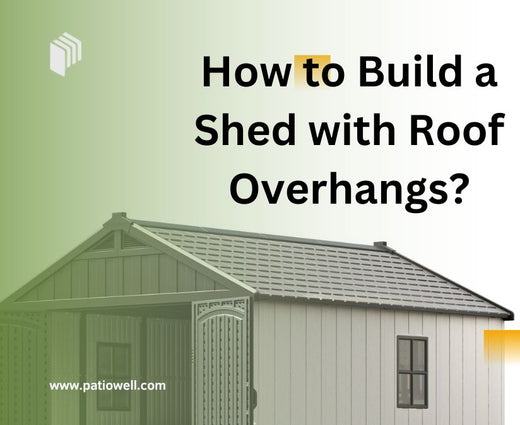It seems like building a shed is relatively easy, but one of the most common questions asked is, "how far from property line can I build a shed?" Well, boy, do most people know how big of an issue it truly is once they get that fine or need to move their shed. Setbacks and zoning rules can be confusing, but do not worry. This article is here to help you out.
You will learn how to check local regulations, design the perfect location for your shed, and avoid any problems with your neighbors or permits. We will help you understand the basics, whether small or large, to get you started with confidence.
So, let's get started.
Table of Contents:[hide]
How Far From Property Line Can I Build a Shed?
The ideal location of your shed depends on local regulations like zoning laws:
1.1 Importance of Checking Local Regulations Before Construction
Before building a shed, check your local regulations. Most cities and towns have laws that say how close a shed can be to the property line, due to setbacks that keep things non-obtrusive, private, and orderly within the neighborhood. If you don't follow them, you might get fined, or you will be asked to move the shed or even tear it down.
Start by calling your local zoning or building department. They will be able to let you know what the rules are in your area concerning setbacks, permits, and any covenants or restrictions, such as easements. Knowing these details beforehand can save you a great deal of time, money, and headaches later on.
1.2 Zoning Laws and Local Regulations
Zoning laws determine where and how you can build on your property. Some common regulations regarding sheds include:
- Setback Distances: Many places require that sheds be 5 to 10 feet off the property line. In some locations, this can be more or less a requirement depending on the size and type of shed.
- Permits: These may be required, especially for larger sheds, anything over 100–120 square feet.
- Easements: These are portions on your lot that may be reserved for utility lines, etc. You cannot build on these.
- Exceptions: There are cases, such as if your lot is little or irregular, where you will have to get special permission to build closer to the property line.
Checking all these rules beforehand will save you a lot from troubles with neighbors, delays, or extra costs.
|
State |
Zoning Overview |
Official Website |
|
California |
Zoning laws vary by county and city, emphasizing land use, building heights, and environmental considerations. |
California State Government |
|
Texas |
Zoning is managed locally, with many rural areas having minimal or no zoning regulations. |
|
|
Florida |
Focuses on residential, agricultural, and mixed-use zones; some areas enforce hurricane-resistant building codes. |
|
|
New York |
Zoning varies between urban and rural areas, with NYC having detailed zoning resolutions. |
|
|
Illinois |
Urban zoning typically includes residential, commercial, and industrial zones; farmland often has fewer restrictions. |
Typical Setback Distances for Sheds
2.1 Residential Areas
Most residential areas conveniently require sheds to be 5 to 10 feet away from property lines. These are called setbacks that help in maintaining privacy and safety.
The front will normally require a greater distance, such as 10 to 20 feet, while the side and backyard will have smaller setbacks. Always look up your local zoning rules for the exact distances required.
2.2 Accessory Structures
Sheds fall into the category of accessory structures, as would garages or gazebos. The rules for these typically include the structure must be a minimum of 5 feet from the property line. If utilities such as electricity are part of the shed, the distance must be increased.
They should also not be over easements or areas used for utility access, such as underground pipes or cables, to avoid problems in the future.
2.3 Small Sheds
Regulations are sometimes a bit more lenient with regard to small sheds, usually less than 120 square feet. Smaller sheds may be allowed to be as close as 3 feet from property lines, especially in areas where they do not have foundations or even electrical connections.
Even small sheds have to comply with local regulations so as not to obstruct sunlight or views for neighbors. Always verify with the regulations to see what the restrictions are.
What to Consider When Building Your Shed Near the Property Line
Here's what you should consider when building your shed near the property line:
3.1 Size and Function of the Shed
Size does matter as smaller sheds, like garden storage, usually have fewer restrictions and can be placed closer to the property line, often within 3-5 feet. Larger sheds or workshops may want more space because they could include electricity or plumbing. Make sure the size and purpose of the shed meet the local rules before construction starts.
3.2 Driveways and Easements
Check your property for easements. These are areas that you cannot build on or above the ground or in some cases, too close to and you will need to know where these are. If your shed is near a driveway, make sure it won't interfere with access or be a hazard. A property survey or local zoning office can tell you where these problem areas lie.
3.3 Neighbor Considerations
Building close to your property line may affect your neighbors. To avoid problems:
- Discuss your plans with your neighbors.
- Also, make sure the shed will not hamper their sunlight, view, or access to shared areas.
- Observe the required setback distances to remain within the bounds of regulations but also nurture good relations.
3.4 HOA Restrictions
If your neighborhood has a Homeowners Association, there may be additional restrictions. HOAs could have provisions that are aimed at:
- Shed size, design, and materials.
- How close the shed can be to your property line.
- Approval requirements before you start building.
Check with your HOA to avoid fines or having to move or change the shed later.
Keeping these things in mind, you will be able to construct the shed in the right place with no rules violated and without upsetting your neighbors.
Where Can I Put a Shed on My Property
The placement of a shed on your property depends on zoning laws, local regulations, and neighborhood covenants. Here's a general guide to consider:
4.1 Consult Local Zoning Ordinances
First, start by looking at your local zoning ordinances. These will be rules that tell you where on your property the shed can be placed. This includes setback distances, the distance required between your shed and any property lines, fences, or other structuring.
Most areas require you to place your shed 5-10 feet from property lines minimum. While this may be a little different for some areas, such is the case. Contact your local zoning office or check their website for the right information in your area.
4.2 Property Survey
A property survey shows you exactly where your boundaries are. Knowing these lines can save you building your shed on your neighbor's property or too close to the edge. If you don't have a recent survey, you can hire a professional surveyor who will clearly mark the lines of your property. This is very helpful if your lot is small or if the boundaries aren't distinct.
4.3 Building Permit
|
Shed Size |
Permit Requirements |
Key Considerations |
|
Small Sheds (<100 sq ft) |
Often don’t require permits. |
Must follow setback rules and avoid utility easements. |
|
Medium Sheds (100-200 sq ft) |
Likely need permits. |
Must adhere to local zoning codes and setback requirements. |
|
Large Sheds (>200 sq ft) |
Typically require formal building permits. |
Require inspections, zoning compliance, and structural approval. |
Most municipalities consider a shed large if it is above a certain size, normally above 100 to 120 square feet. This size normally requires a building permit. A building permit ensures that your shed has been constructed according to the building and safety codes of your area. In most cases you would need to file an application with:
- Survey of the property showing where the shed will be placed.
- Plans for the shed: its size and what material it is to be made of.
- A small processing fee for the permit.
Yes, it takes some time to obtain the permit, but you won't face any fine nor will you have to relocate your shed later on. Check with the local building department for details on how to apply.
With these steps, you will be in a position to decide confidently on the best place for your shed with consideration of the regulation.
FAQs
If you build a lean-to, where should you position the opening?
Place the open side of the lean-to shed away from property lines for privacy, and toward accessible areas, such as a driveway or path, for convenience. Do not face the opening directly at windows or into your neighbor's space.
Can I have 2 sheds on my property?
Yes, most areas permit two sheds, but you must look at local zoning laws for any restrictions regarding number, size, or setbacks. Be sure both sheds meet local rules.
What's the minimum distance between a shed and a house?
Typically, the minimum clearance is 3–5 feet, but it will be larger depending on your local regulations in relation to larger sheds or those with utilities.
How far does a shed have to be from the fence?
Generally a shed must be 3–10 feet from a fence, but clearly that depends on your local zoning laws.

- Made from high-quality resin material that resists rust, rot, peeling, and fading.
- Strong yet easy to move, ensuring convenience without compromising durability.
- No need for painting or treating; simple cleaning keeps the shed looking new.
- Designed to withstand sun exposure without cracking or warping, ensuring long-lasting use.
Conclusion
Building a shed is one of the best ways to enhance your property, and there are some rules and regulations you have to follow. Check with local ordinances regarding zoning, have a current property survey, and apply for a permit if needed. Pay attention to setbacks, easements, and neighbor space.
Of course, sheds can be simple to build, but just a little research beforehand will avoid problems. If done right, your shed project will be smoothly accomplished, and the shed itself can be quite useful for your property.
Diana Mason
Hi there! I’m Diana Mason, the chief editor of Patiowell brand. With over 15 years of diving deep into the world of outdoor furniture, I’ve developed a keen eye for what makes outdoor spaces truly special. I love sharing tips and inspiration to help you create your perfect backyard retreat. Our blog is a reflection of my passion and expertise, featuring only the best pieces that I personally vouch for. Thanks for stopping by—I can't wait to help you transform your outdoor living space!









Leave a comment
All comments are moderated before being published.
This site is protected by hCaptcha and the hCaptcha Privacy Policy and Terms of Service apply.